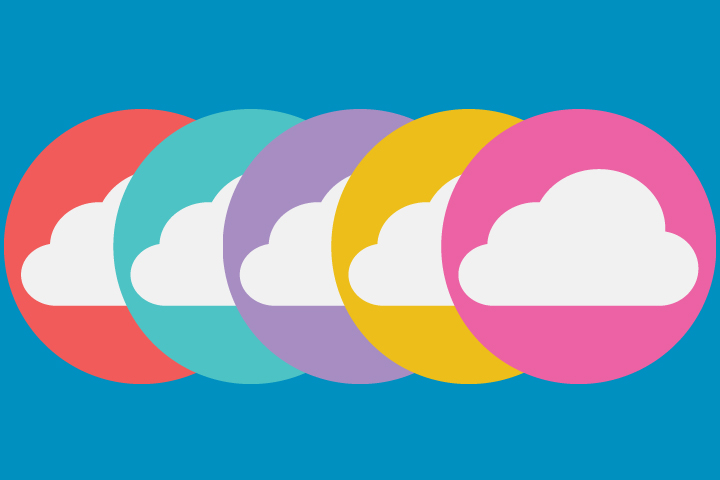Multicloud and distributed cloud: An industry primer

With more and more enterprises turning to multiple cloud services, a move to distributed cloud set-ups becomes increasingly likely – perhaps even necessary. What are the differences between these two discrete cloud implementations, and what are the relative benefits and drawbacks of each approach? Cerillion Product Director Brian Coombs writes.
According to Gartner, the public cloud market is forecast to rise by 17% this year to $266.4 billion, up from $227.8 billion in 2019. Cloud deployments are leveraging and processing increasingly bigger and costlier datasets, making edge computing a growing priority; by 2022, over half of all business-generated data will be produced and processed away from traditional cloud data centres, climbing further to 75% by 2025.
First there was hybrid cloud, a mixture of interconnected public and private clouds; now, with enterprise cloud models continually increasing in sophistication freeing enterprises from the reliance on expensive data centres and fretting over infrastructure, this has resulted in multiple clouds for different purposes. This will enable the enterprise to select the best features from each and combine them, giving rise, eventually, to distributed cloud architectures.
No matter what shape or size many of these cloud formations come in, the shade they provide tends to always be the same, as we’ve previously covered. But what exactly is it that sets these two different deployment models apart?
Multicloud
Multicloud can mean different things to different people depending on what they are using it for. More complex than the traditional hybrid set-up, with the freedom afforded by the likes of Amazon Web Services and Microsoft Azure, companies can run separate applications, workloads or data on a single cloud service, rather than using multiple clouds on an individual basis.
Essentially, multicloud is a deployment model making use of multiple cloud services from different providers in a single architecture – a cloud of cloud services. We explore some of the common use cases below:
At the application level, software is deployed as multicloud for each customer, allowing components to leverage the best-of-breed capabilities of underlying clouds. For example, you may choose to use Oracle Cloud for hosting an Oracle database, but then use AWS or Azure for hosting the main business application that uses the database. Or at a lower level you could even have discrete functions from different clouds, such as image recognition from one, voice recognition from another.
Multicloud infrastructure empowers organisations to mix and match platforms and vendors, running apps without having to worry about their underlying infrastructure or latency; the data centre closest to the end-user serves the requested data, with minimum server hops. Resilient architectures provide optimised data services (including unique capabilities of AI, IoT and machine learning) and better environmental footprint.
For companies buying IT software and services, multicloud offers a mixture of infrastructure from the likes of AWS, Azure or Google, with a geographic spread allowing users to select the appropriate storage location based on business needs or required features reducing latency, all while conforming to local data laws and regulations, such as GDPR.
By eliminating dependence on a single cloud provider, multicloud yields better availability for each application by distributing workloads across multiple cloud environments to get the biggest bang for their buck while mitigating risks associated with individual cloud environments and avoiding vendor lock-in.
For software vendors, multicloud can often refer to being cloud agnostic in what they sell; their software can run on any platform, but only on one at a time, so customers then choose which cloud they want it deployed on, according to their own strategy.
Multicloud can be costly and time-consuming, forcing dev teams to spend time configuring and scaling each application per cloud, and ensuring each of these complex deployments is secured. But for companies that want to retain control over their data, adopting multicloud is key, particularly with separate departments requiring distinct solutions to address their needs. With 70% of enterprises intending to commit to reducing dependency on individual vendors by 2024, multicloud set-ups are soon to become the norm.
Distributed Cloud
One of Gartner’s top 10 strategic technology trends for 2020 that “ushers in a new era of cloud computing,” the distributed cloud is a relatively new evolution in cloud deployments which combines various cloud computing technologies as a singular system to connect and process data at different locations including the “edge,” but with the cloud provider still presiding over the service operations and updates.
Reflecting the increasing decentralisation of business services and operations that require real-time processing or local data storage, the distributed cloud model provides better performance for cloud services and microservices by routing processing to where the most appropriate infrastructure dwells, while ensuring lower latency and reducing the likelihood of outages.
The move towards cloud processing at the edge is increasingly pushing businesses to a distributed model as the next stage of their cloud migration. Services such as Azure Stack, AWS Outposts and Google Anthos are now enabling organisations to manage their distinct public cloud resources and sensitive data in one cloud system, but with the flexibility and benefits of local deployment on premises.
However, does distributed cloud address the drawbacks of multicloud? Aside from the need to secure data between stacks, and lack of in-house expertise for each respective system, the biggest challenge comes with its costs; as with multicloud, without a central management strategy, your business’ various departments may find themselves tripping over their respective cloud providers and pushing your OPEX into the red.
From network function virtualisation and content delivery to IoT data processing and machine learning, multicloud is enabling a broad set of functions to deliver a more secure, scalable solution for businesses dealing with huge datasets and complex services. With distributed cloud, the added interconnection between clouds brings lower latency through local storage and processing.
While upfront costs for distributed clouds are high, the control that companies can wield over their systems can offer unparalleled customisation and tailoring of resources to business needs. Although the trend towards distributed cloud is a positive one, organisations should still consider employing more than one stack to effectively manage data, as the possibility for these services to fail nevertheless remains.
Let Cerillion’s private & public cloud solutions get your business ready for multicloud, distributed cloud and beyond.

